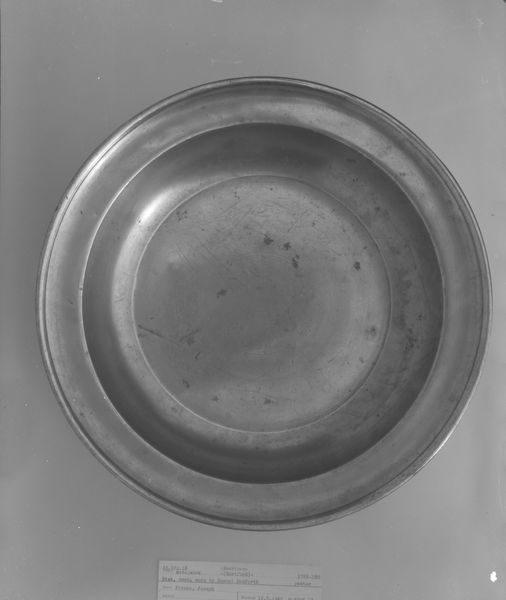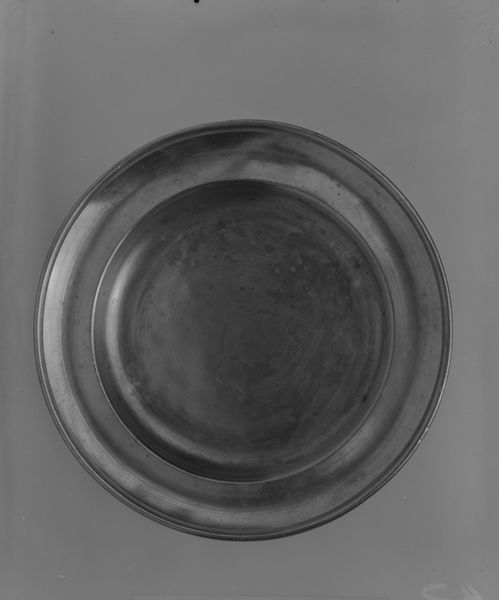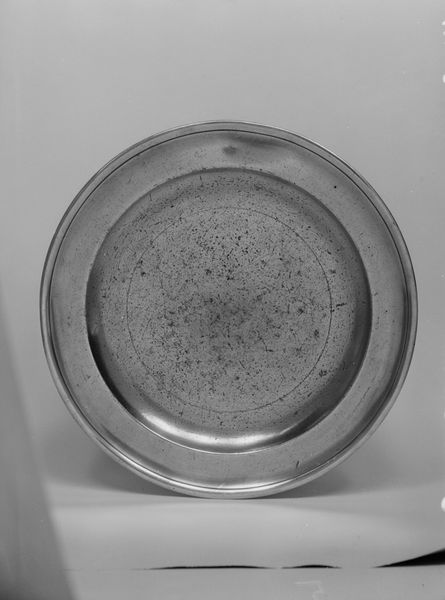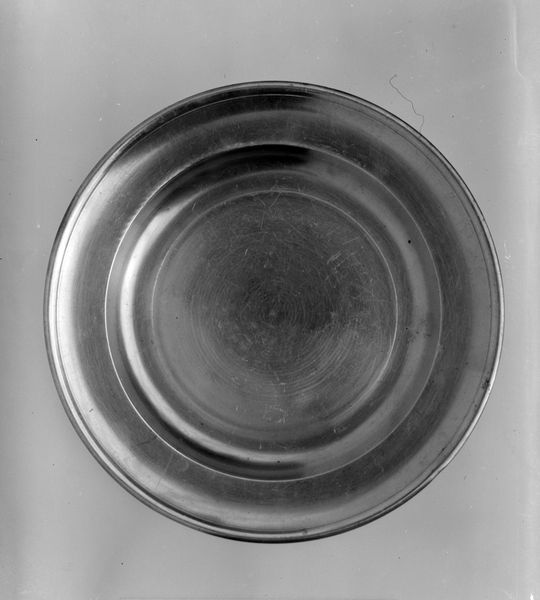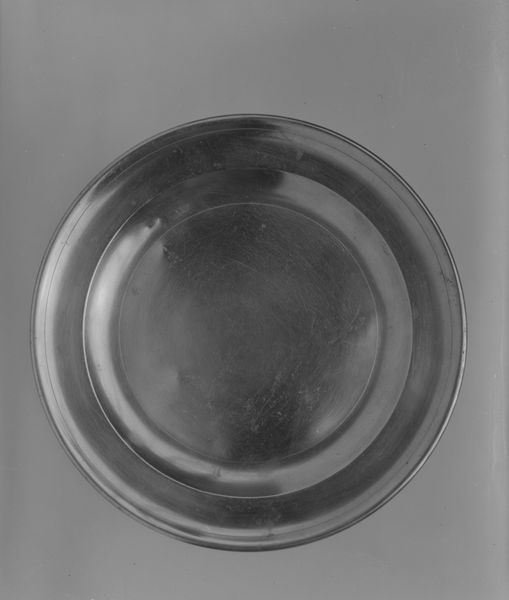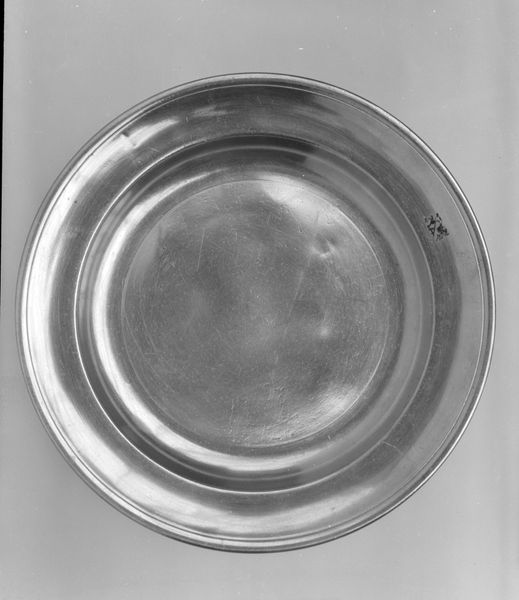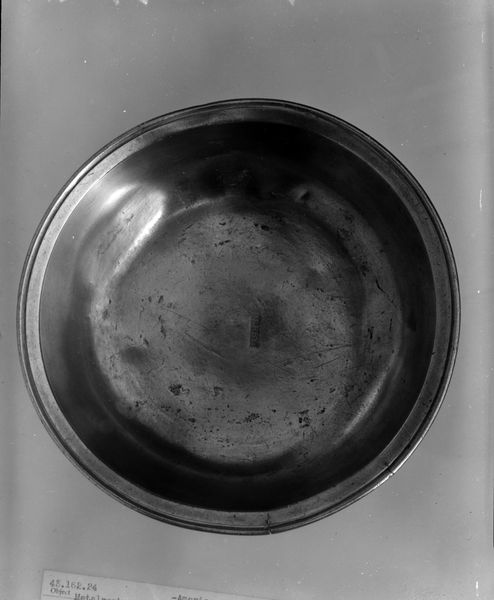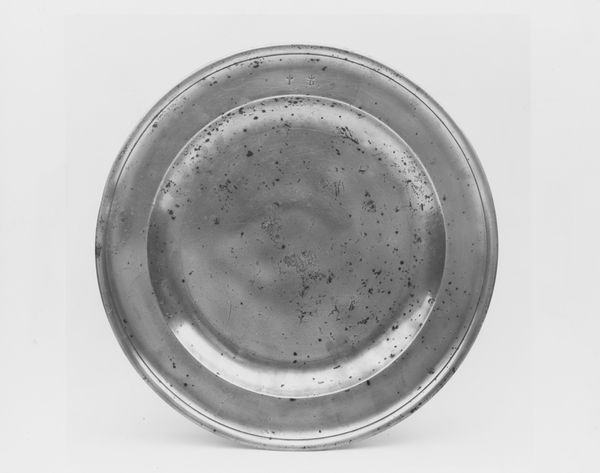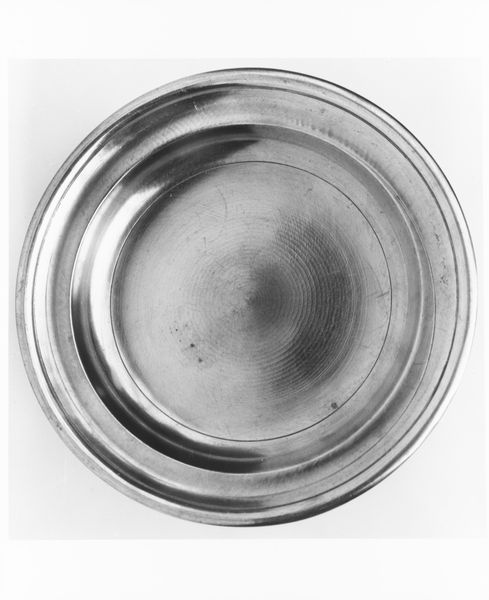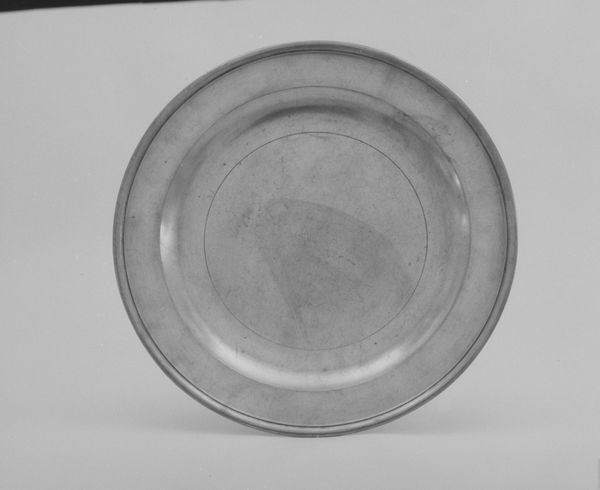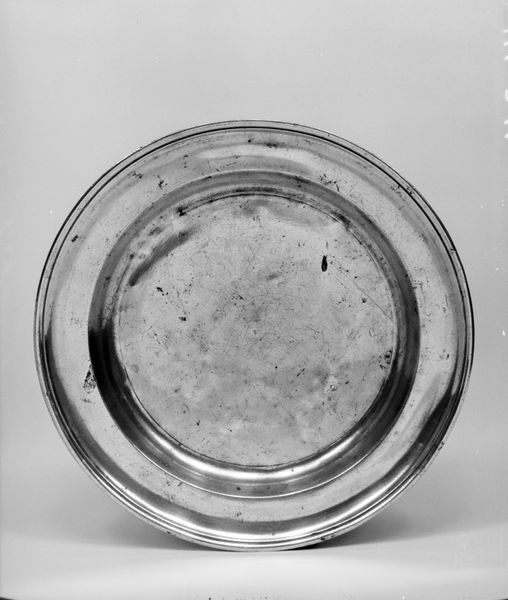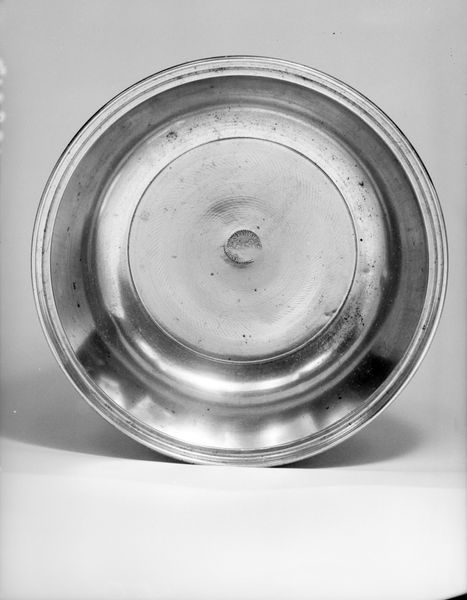
metal
#
metal
#
decorative-art
Dimensions: H. 3/4 in. (1.9 cm); Diam. 9 in. (22.9 cm)
Copyright: Public Domain
This plate was made by Francis Bassett I, a colonial American pewterer working in New York, sometime before 1758. Pewter is an alloy of tin with small amounts of other metals, like copper or lead, added for strength. It’s a humble material, in comparison to silver or gold. The plate would have been formed using a combination of casting, hammering, and lathe-turning, skilled traditions shared with blacksmithing and woodwork. Molten pewter was poured into a mold to create a basic shape, then hammered and spun on a lathe to refine its form and surface. The material’s inherent qualities – its softness, weight, and dull luster – all speak to the practical nature of pewterware. In a society increasingly defined by trade and consumption, objects like this plate offer insights into the lives of ordinary people. The amount of work involved in its production reflects the economic realities of colonial America. By focusing on materials, making, and context, we gain a deeper understanding of the artistic and social significance of this seemingly simple object, challenging the traditional distinctions between fine art and craft.
Comments
No comments
Be the first to comment and join the conversation on the ultimate creative platform.
